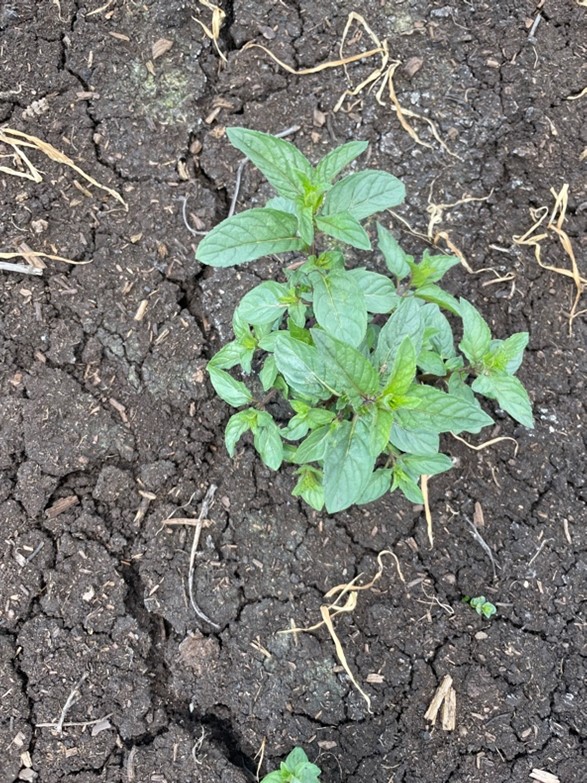Jun 17, 2021Optimizing herbicide performance during droughty conditions
Many non-irrigated areas of the Upper Midwest are becoming significantly droughty as our weather prematurely enters the dog days of summer. There are several agricultural impacts of these hot and dry conditions, including on weed growth and management. While we can’t make it rain, we can use awareness of how drought affects weeds to adjust plans in a way that optimizes management. Here, we offer a very short summary of weed growth and herbicide performance in a drought and a few tips on how to adjust plans in these conditions.
Weed growth in a drought:
Annual weeds are biologically conditioned to germinate and emerge when weather conditions favor survival and reproduction. There are many factors that affect seed dormancy, such as soil temperature, seed age, seed coat mechanical breakdown and soil moisture. Weed seed that is close to the soil surface is most affected by drought and we often see fewer weed seeds break dormancy and germinate in these conditions. And, some weeds that do germinate will die before establishment because of inadequate moisture to support growth.
That’s the good news. Unfortunately, there are two negative aspects of weed biology during a drought that affect successful management. First, in the absence of annual small-seeded weeds that germinate from near the soil surface, the weed spectrum shifts to those that are often harder to control: perennials regrowing from deep and established root systems such as yellow nutsedge and Canada thistle and large-seeded weed species that can germinate and emerge from deeper in the soil where moisture may be more available. Second, emerged weeds become “hardened off” and more difficult to control during a drought. In particular, they will put on a thicker, waxier cuticle on leaf surfaces to protect from water loss.
Herbicide performance during a drought and what we can do to optimize it:
There are two common misconceptions that we need to first address: soil residual herbicides don’t prevent weed seed germination and stressed weeds are actually harder to control than healthy, actively growing weeds. In a very general sense, herbicides act by blocking an active biological process required for normal weed growth, and so that target biological process needs to be happening for the herbicide to work.
For soil residual herbicides that are applied prior to weed germination and emergence (pre-emergent herbicides), the herbicide needs to be near the weed seed in the soil as it germinates and the seed needs to break dormancy. In many cases we rely on soil moisture from moderate rainfall to incorporate pre-emergent herbicides into the target weed germination zone. If this doesn’t happen weed seed can germinate and emerge rapidly through herbicide sitting on the soil surface. When rainfall is scarce or sporadic, it’s worth watching the forecast even more carefully to try to time crop planting and/or pre-emergent herbicide application to the best chance of adequate soil moisture as outlined on the herbicide label. Editorial note: this is obviously easier said than done. I have a beet trial where I planted just before an 80% chance of showers that never happened and has sat with herbicide on the powder dry soil surface for two weeks now. When it does finally rain, I don’t expect much out of the pre-emergent herbicide and have started planning for a more aggressive post-emergent program. This is a time when scouting is more important than ever so that post-emergent control options can be considered and timed relative to unanticipated changes in the weed spectrum.
If the droughty conditions persist during the remainder of the growing season and beyond, we’ll need to consider another consequence: the risk for extended soil residual carryover. In short, the vast majority of herbicides rely on soil microbes for breakdown and these microbes aren’t very active in dry soils. But, let’s cross that bridge if and when we get to it in a follow-up article – just be aware of what might be planted next as you think about your herbicide choices and rotational restrictions.
For post-emergent herbicides, as always be very careful to follow the details of the label to optimize performance. Be sure to use the correct adjuvant to help the herbicide penetrate drought-protected leaf surfaces, follow the weed growth stages carefully, and consider adjusting the rate within the labeled ranges with a more challenging target in mind.
In the meantime, stay cool and hydrated and know that I’ll be right alongside you checking the weather forecast day and night.
– Jed Colquhoun, University of Wisconsin
Ground cracking in a powder dry Wisconsin mint field on June 7, 2021. Photo: University of Wisconsin

















